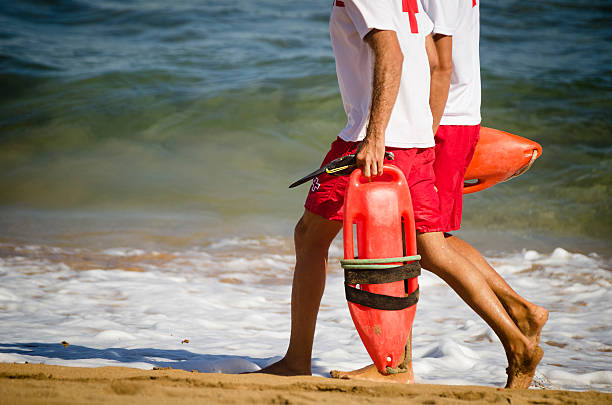Becoming a certified lifeguard is a rewarding endeavor that opens doors to a variety of career opportunities while allowing you to play a critical role in ensuring the safety of swimmers. The lifeguard certification process involves several steps, each designed to equip you with the necessary skills and knowledge to perform effectively in emergency situations. This step-by-step guide will help you navigate the lifeguard certification process smoothly and efficiently.
Step 1: Understand the Requirements
Before you begin the certification process, it’s essential to understand the prerequisites and requirements. These can vary slightly depending on the certifying organization, but generally include:
- Age Requirement: Most organizations require candidates to be at least 15 years old.
- Physical Fitness: You must be in good physical condition and capable of swimming long distances, treading water, and performing rescues.
- Prerequisite Skills: Basic swimming skills and the ability to perform certain water rescues are often required before starting the course.
- Ensure you meet these basic requirements before enrolling in a lifeguard certification course.
Step 2: Register for the Course
Once you’ve selected a certification program, the next step is to register. You can usually do this online through the organization’s website. During registration, you’ll need to provide personal information and pay a course fee. Keep in mind that some programs may offer financial aid or payment plans to help cover the costs.
Step 3: Complete the Prerequisite Swim Test
Many lifeguard certification courses require you to pass a prerequisite swim test before beginning formal training. This test typically includes:
Swimming a specific distance (usually 300-500 yards) without stopping: You must demonstrate proficiency in various strokes such as freestyle and breaststroke.
Treading water for a set duration (usually 2 minutes) without using your hands: This assesses your endurance and buoyancy control.
Retrieving a 10-pound object from the bottom of the pool: This simulates a rescue scenario and tests your ability to dive and surface with weight.
Passing this test confirms that you have the necessary swimming skills to proceed with the course.
Step 4: Attend and Participate in the Course
The lifeguard certification course typically includes both classroom instruction and practical, hands-on training. Key components of the course include:
- Rescue Techniques: Learning various water rescue methods, including active and passive victim rescues, spinal injury management, and the use of rescue equipment.
- First Aid and CPR: Training in basic first aid, CPR, and the use of Automated External Defibrillators (AEDs).
- Emergency Response: Developing the ability to recognize emergencies, assess situations, and respond effectively.
- Simulated Drills: Participating in realistic simulations to practice and refine your skills in a controlled environment.
- Active participation and practice are crucial for mastering the skills taught in the course.
Step 5: Pass the Written Exam
At the end of the course, you will be required to pass a written exam that tests your knowledge of lifeguarding principles, first aid, CPR, and emergency response protocols. The exam typically includes multiple-choice and true/false questions. To prepare, review your course materials thoroughly and consider forming a study group with your classmates.
Step 6: Receive Your Certification
Upon successfully completing both the written and practical exams, you will receive your lifeguard certification. This certification is typically valid for two years, after which you will need to complete a recertification course to maintain your credentials. Your certification card will include important information such as the certifying organization, the date of certification, and the expiration date.
Step 7: Apply for Lifeguard Positions
With your certification in hand, you’re ready to apply for lifeguard positions. Prepare a resume that highlights your certification, training, and any relevant experience. When applying for jobs, consider various settings such as public pools, private clubs, beaches, waterparks, and recreational facilities. Networking with instructors, classmates, and other lifeguards can also help you find job opportunities.
Step 8: Continue Your Training and Education
Lifeguarding requires ongoing training and education to stay current with the latest techniques and safety protocols. Regularly participate in in-service training sessions and continuing education courses offered by your certifying organization. Additionally, consider pursuing advanced certifications, such as:
- Waterfront Lifeguarding: Specialized training for lifeguarding in natural water environments like lakes and oceans.
- Waterpark Lifeguarding: Focused training for lifeguarding at waterparks with unique attractions like slides and wave pools.
- Instructor Certification: Becoming certified to teach lifeguard courses and train new lifeguards.
- Continuous learning ensures that you remain a proficient and effective lifeguard throughout your career.
Conclusion
Navigating the lifeguard certification process involves several key steps, from understanding the requirements and choosing the right program to passing exams and continuing your education. By following this step-by-step guide, you can successfully become a certified lifeguard and embark on a fulfilling career dedicated to ensuring the safety of others. Remember, the journey doesn’t end with certification; ongoing training and skill development are essential to maintaining your expertise and effectiveness as a lifeguard.




